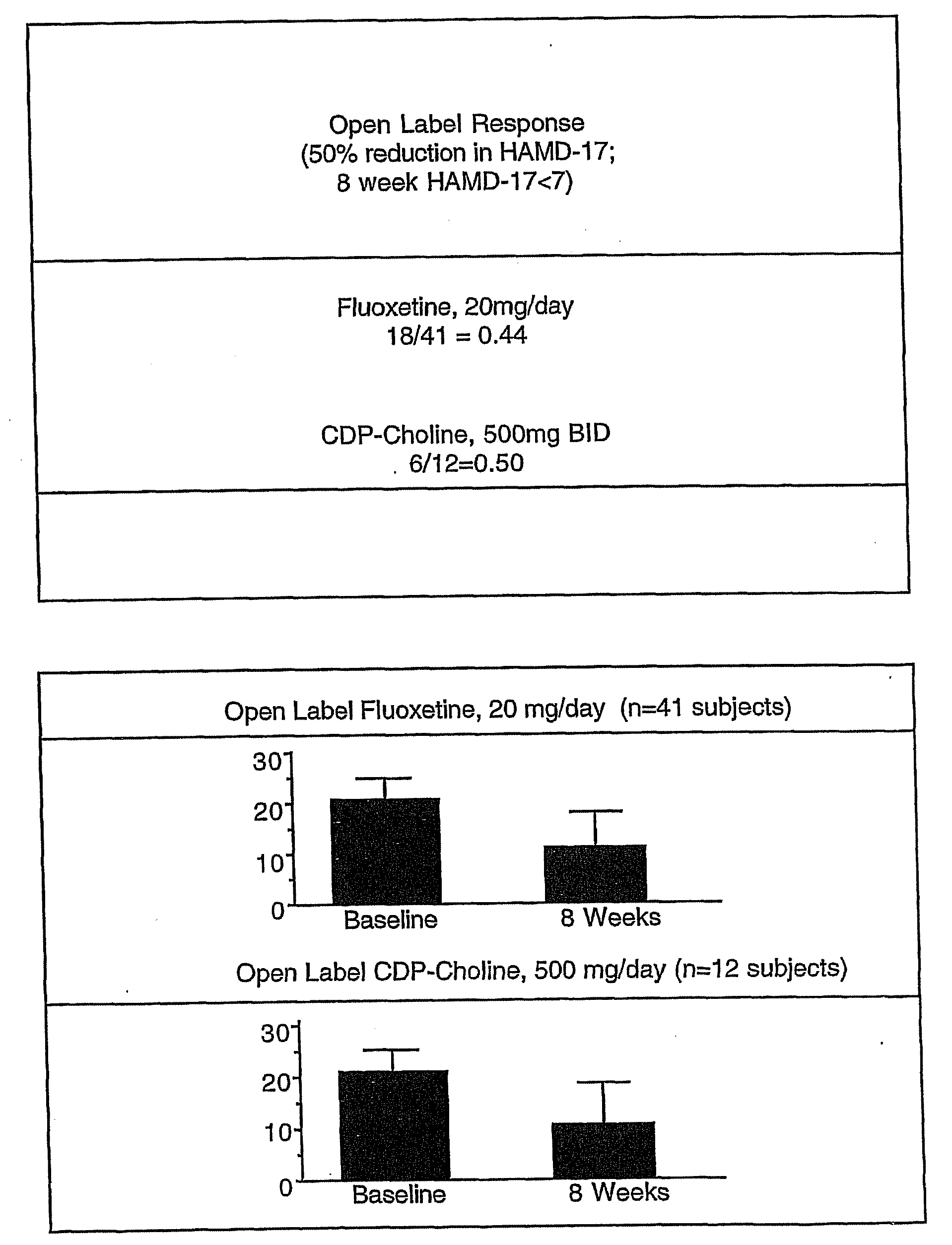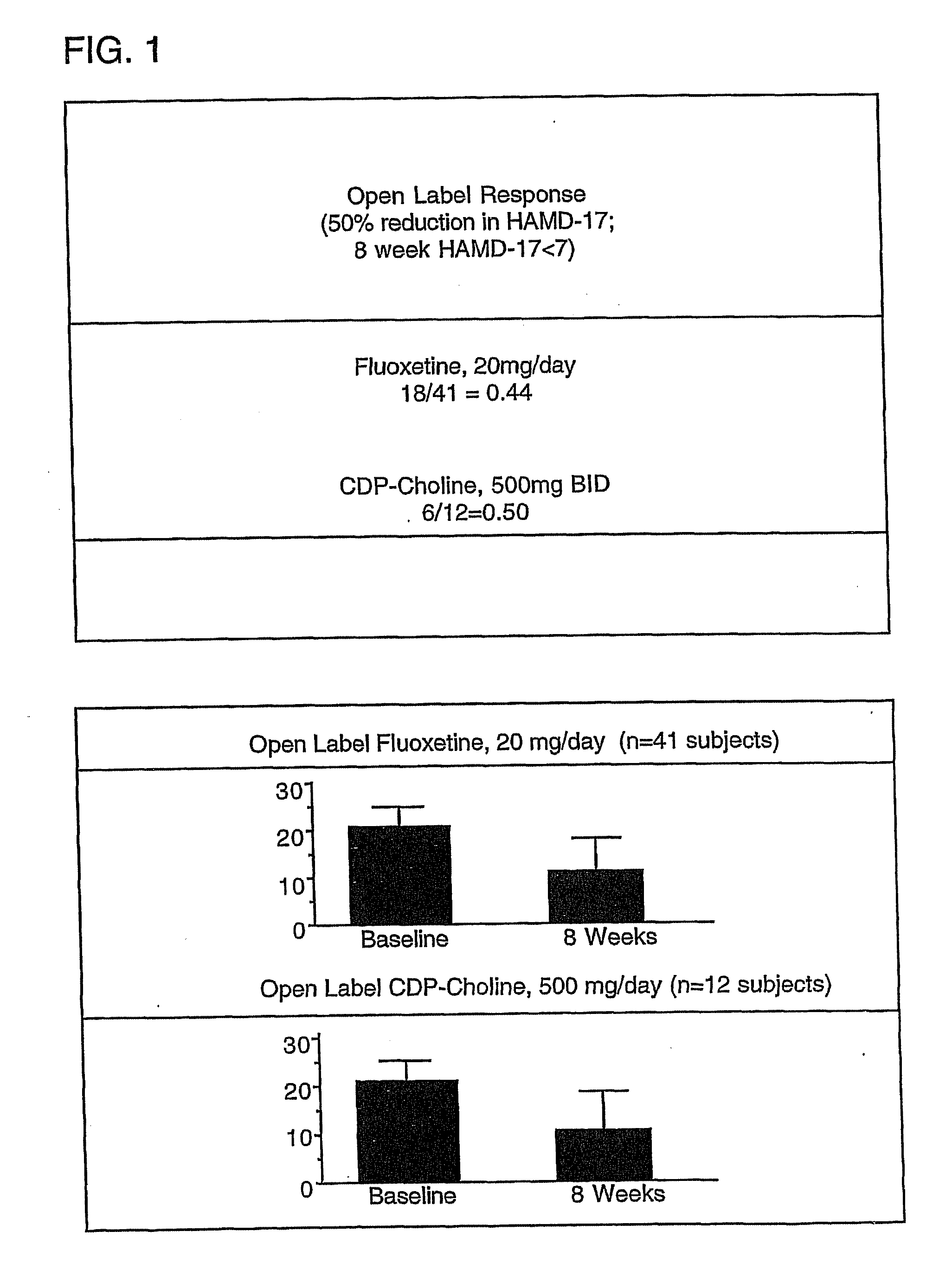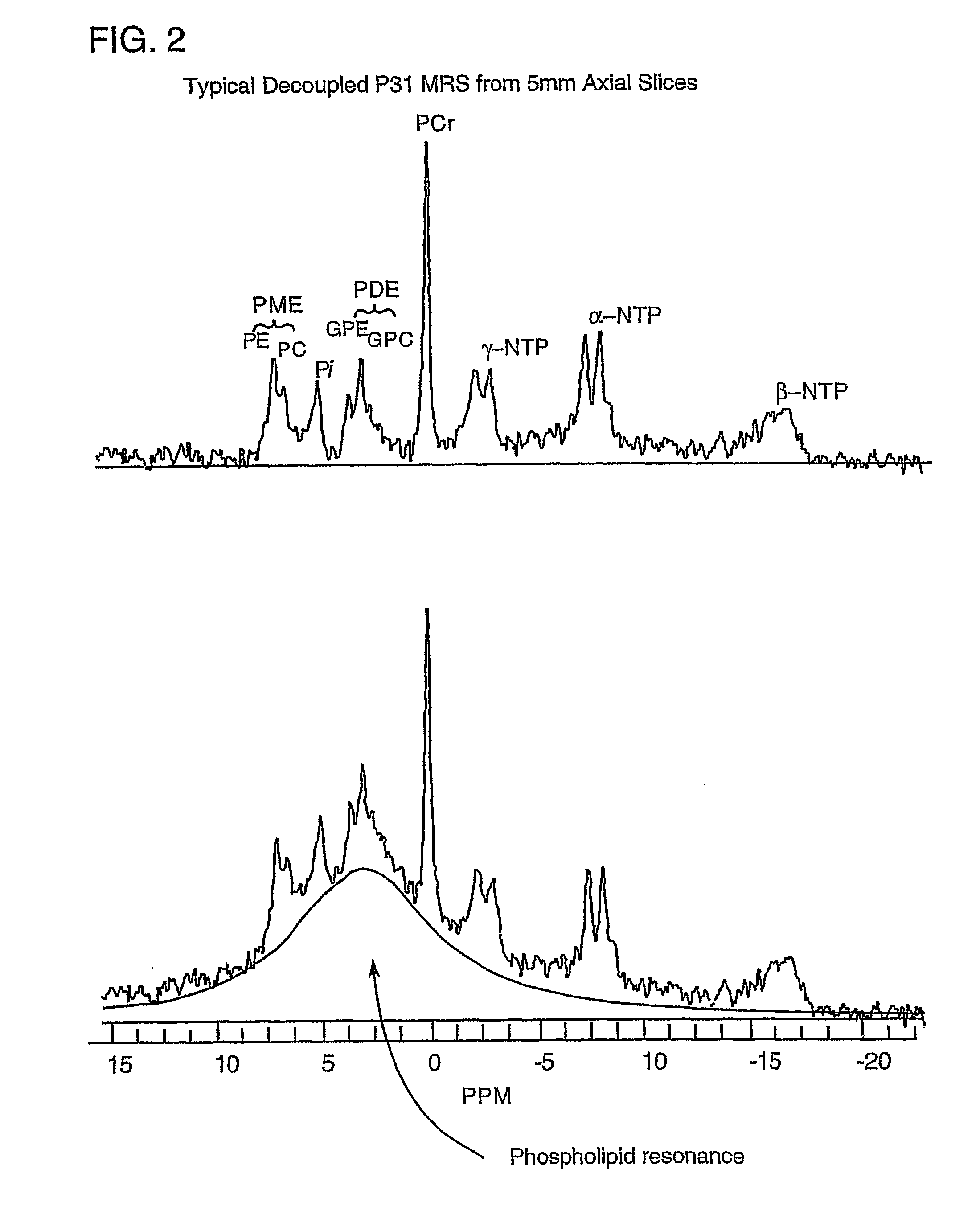Compounds for the treatment of psychiatric or substance abuse disorders
a psychiatric or substance abuse disorder and compound technology, applied in the field of compound therapy for psychiatric or substance abuse disorders, can solve the problems of tissue damage, physical dependence and withdrawal symptoms, adverse societal and health consequences,
- Summary
- Abstract
- Description
- Claims
- Application Information
AI Technical Summary
Benefits of technology
Problems solved by technology
Method used
Image
Examples
examples
Unipolar Depression or Dysthymia
[0068]Treatment of Human Subjects with Cytidine- or Cytosine-Containing Compounds
[0069]Proton and phosphorus magnetic resonance (MR) spectroscopy studies of subjects with mood disorders have characterized two patterns of altered neurochemistry associated with depression. The first pattern indicates a change (increase or decrease) in cytosolic choline, as well as increased frontal lobe phosphomonoesters, while the second pattern points to decreased brain purines (cytosolic adenosine- and cytidine-containing compounds) and decreased nucleoside triphosphates (NTP). The former results reflect altered phospholipid metabolism, while the latter results indicate changes in cerebral energetics. Although few longitudinal studies have been conducted, these altered metabolite levels appear to be mood state, rather than trait, dependent.
[0070]To assess whether chronic CDP-choline administration leads to detectable changes in lipid metabolite resonances in phosphor...
PUM
| Property | Measurement | Unit |
|---|---|---|
| Slice thickness | aaaaa | aaaaa |
| substance abuse disorders | aaaaa | aaaaa |
| weight | aaaaa | aaaaa |
Abstract
Description
Claims
Application Information
 Login to View More
Login to View More - R&D
- Intellectual Property
- Life Sciences
- Materials
- Tech Scout
- Unparalleled Data Quality
- Higher Quality Content
- 60% Fewer Hallucinations
Browse by: Latest US Patents, China's latest patents, Technical Efficacy Thesaurus, Application Domain, Technology Topic, Popular Technical Reports.
© 2025 PatSnap. All rights reserved.Legal|Privacy policy|Modern Slavery Act Transparency Statement|Sitemap|About US| Contact US: help@patsnap.com



